How to keep brass from tarnishing?
Brass is a beautiful and versatile metal commonly used in home decor, fixtures, and hardware. However, brass tarnishes over time, which can detract from its aesthetic appeal. To help maintain the luster and longevity of your brass items, it’s important to know how to prevent tarnishing and how to properly clean and protect brass. In this guide, we’ll explore the causes of brass tarnishing, tips for cleaning and restoring brass, and methods to maintain and protect it from future damage.
Learn how to keep brass from tarnishing with our expert tips. Discover effective cleaning methods and maintenance routines to maintain your brass’s shine and luster.
How to keep brass from tarnishing : Why Does Brass Tarnish?

Brass is an alloy made from copper and zinc, and like copper, it is prone to tarnishing when exposed to air and moisture. This tarnish forms due to a chemical reaction called oxidation, where the metal reacts with oxygen, water, and other environmental elements. Over time, the surface of brass can become dull or develop a greenish layer known as patina.
The tarnishing process begins when the brass reacts with the sulfur in the air, moisture, or oils from human touch. While the patina that forms on brass is often valued for its antique look, most people prefer the shiny, golden appearance of polished brass. Therefore, understanding the tarnishing process is key to preventing it.
Common Causes of Brass Tarnishing
Understanding the causes of brass tarnishing is essential for taking preventive measures. Here are some common factors that contribute to brass tarnishing:
- Exposure to Humidity: High moisture levels in the air speed up the oxidation process, causing brass to tarnish faster. This is especially common in coastal regions where the air is more humid and salty, both of which contribute to rapid tarnishing.
- Pollutants in the Air: Sulfur compounds found in polluted air can lead to faster tarnishing of brass surfaces. Urban areas with higher levels of air pollution tend to see brass tarnishing at a quicker rate than areas with cleaner air.
- Touching with Bare Hands: Oils and acids from your skin can accelerate tarnishing. Every time you touch brass, the oils on your skin leave behind residues that can cause oxidation.
- Proximity to Chemicals: Brass can tarnish more quickly if exposed to harsh cleaning chemicals, salt, or other reactive substances. Chemicals found in everyday household cleaners can cause discoloration and tarnish if they come into contact with brass.
By understanding these causes, you can take steps to prevent brass from tarnishing and keep it looking pristine.
Tips to Keep Brass from Tarnishing
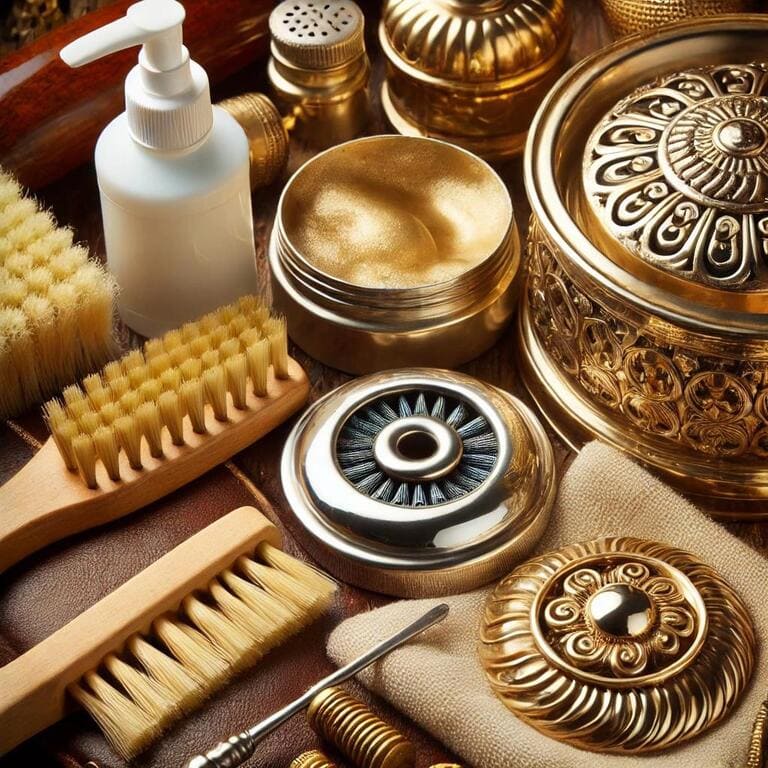
Now that we know the causes of tarnishing, let’s dive into some practical tips for keeping brass items in excellent condition.
1. Regular Dusting and Cleaning

One of the simplest ways to prevent tarnishing is by regularly dusting your brass items with a soft, dry cloth. This removes dirt, oils, and debris that can lead to tarnish buildup. Avoid using harsh chemicals or water-based cleaners, as these can accelerate the oxidation process.
Regular maintenance involves cleaning brass surfaces after use, especially if they have been handled frequently. Consider using gloves when touching decorative brass items to avoid transferring oils from your hands.
2. Monthly Polishing

Polishing brass on a monthly basis helps to maintain its shine and remove any early signs of tarnishing. You can use a commercial brass polish or a homemade solution like a vinegar and salt paste (more on this in the cleaning section). Make sure to buff the brass after polishing to enhance its luster.
A frequent polishing routine helps keep brass items bright, especially if they are regularly exposed to air or moisture. Remember to use a non-abrasive cloth to avoid scratching the surface. When polishing intricate or detailed brass pieces, use a toothbrush to get into all the nooks and crannies.
3. Apply a Protective Coating
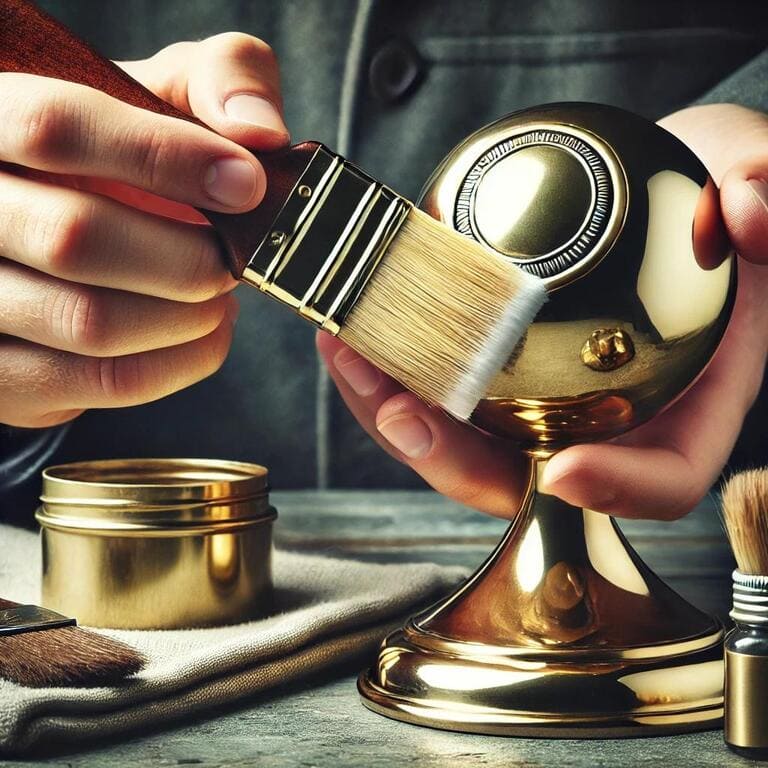
A protective coating, such as lacquer or wax, can act as a barrier between your brass and the environment. This is especially useful for outdoor brass fixtures or items exposed to high humidity. Coatings are a preventative step, ensuring that your brass items retain their shine for longer periods between cleanings.
- Lacquer: Ideal for outdoor brass items, as it provides a strong barrier against the elements. Before applying lacquer, clean the brass thoroughly and apply thin, even coats. Allow each coat to dry before applying the next. Lacquer can help protect brass items that are in areas exposed to high humidity, such as bathrooms or outdoor porches.
- Wax: For indoor items, a paste wax offers a softer, more natural protection. Apply a thin layer with a cloth, then buff it to a shine. Wax provides a more subtle barrier compared to lacquer and is ideal for decorative indoor pieces that don’t see heavy use or exposure to moisture.
If you prefer natural methods, beeswax is an excellent option for coating brass. Rub a small amount of beeswax onto the brass surface, then buff it until smooth and shiny.
4. Store Brass Items Properly

When storing brass items for an extended period, wrap them in a soft cloth and store them in a dry, temperature-controlled environment. This will protect them from scratches, air exposure, and moisture.
Avoid storing brass in damp or humid environments, as this can accelerate tarnishing. Use silica gel packets or other moisture-absorbing products in storage areas to minimize humidity.
5. Use Brass Tarnish Inhibitors

Tarnish inhibitors, such as anti-tarnish cloths or papers, can be placed in drawers or storage areas with your brass items. These materials absorb moisture and sulfur compounds from the air, helping to prevent tarnishing over time.
Anti-tarnish papers are specially treated to neutralize harmful gases like sulfur, which can react with brass and cause oxidation. These inhibitors are especially useful for keeping brass jewelry or small decorative items free from tarnish during long-term storage.
How to Clean Tarnished Brass
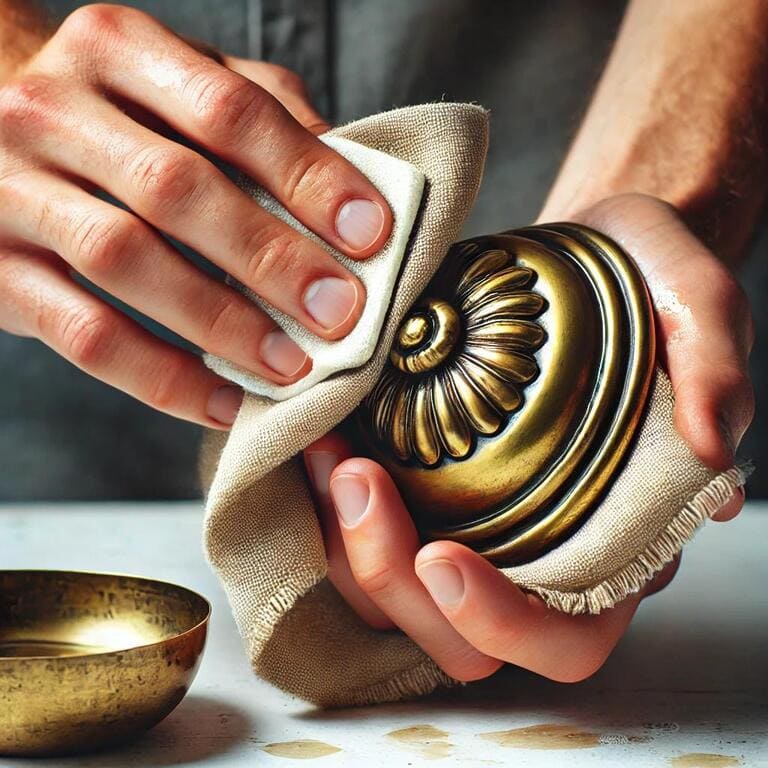
If your brass items have already tarnished, don’t worry – there are several ways to restore them to their original shine. The key is using gentle yet effective cleaning methods that won’t scratch or damage the brass.
Test for Solid Brass or Brass Plating
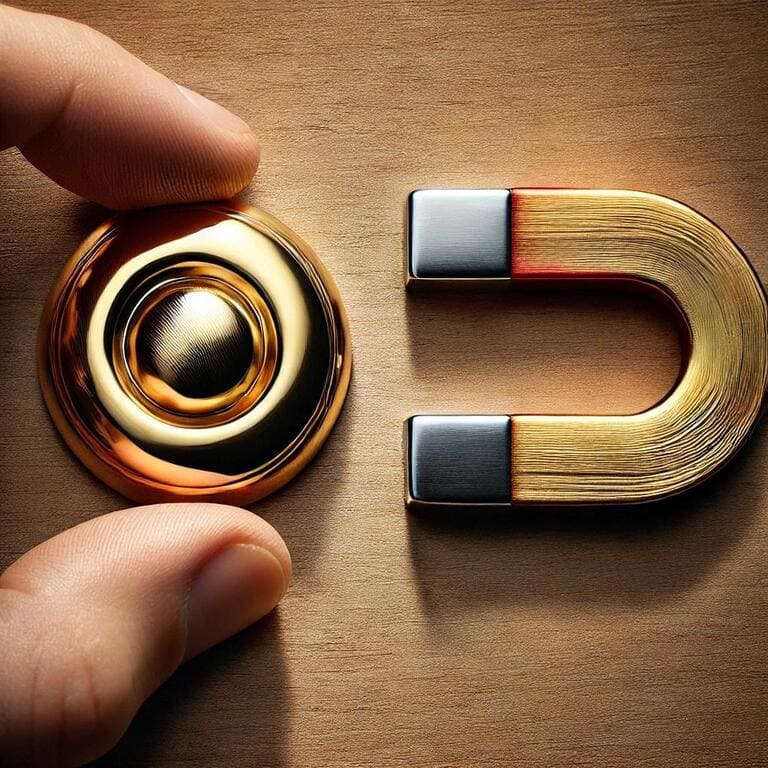
Before cleaning, it’s essential to determine whether your item is made of solid brass or is brass-plated. You can do this by holding a magnet to the item – if the magnet sticks, it’s brass-plated, not solid brass. Brass-plated items require gentler care to avoid damaging the thin brass layer.
Natural Cleaning Methods for Brass
Here are some effective DIY methods to clean tarnished brass using household items:
Vinegar, Salt, and Flour Paste
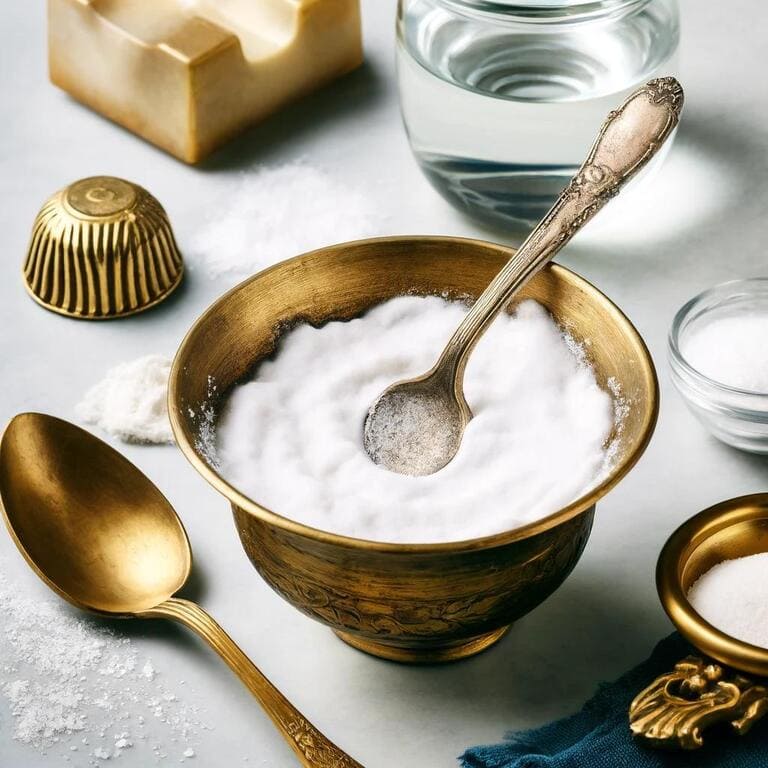
A classic combination, vinegar, salt, and flour can form a powerful brass cleaner. Here’s how:
- Mix equal parts white vinegar and salt, then add enough flour to form a thick paste.
- Apply the paste to the tarnished brass and let it sit for 10-15 minutes.
- Rinse with warm water and buff with a soft cloth.
Lemon and Baking Soda
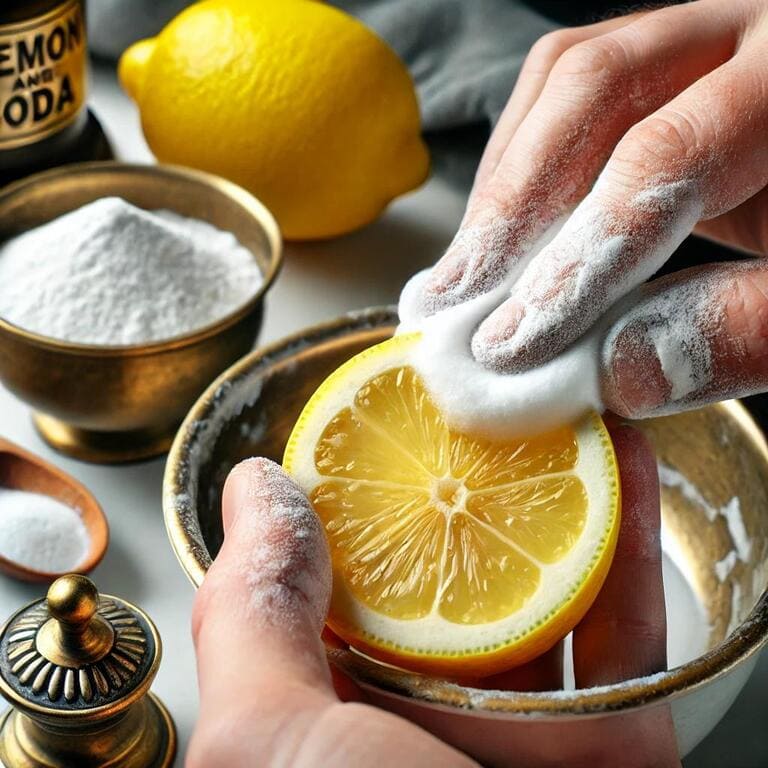
The natural acidity of lemon, combined with baking soda, creates a mild abrasive perfect for cleaning brass.
- Cut a lemon in half and dip it in baking soda.
- Rub the lemon directly onto the brass item.
- Let it sit for a few minutes before rinsing with warm water and drying with a cloth.
Toothpaste
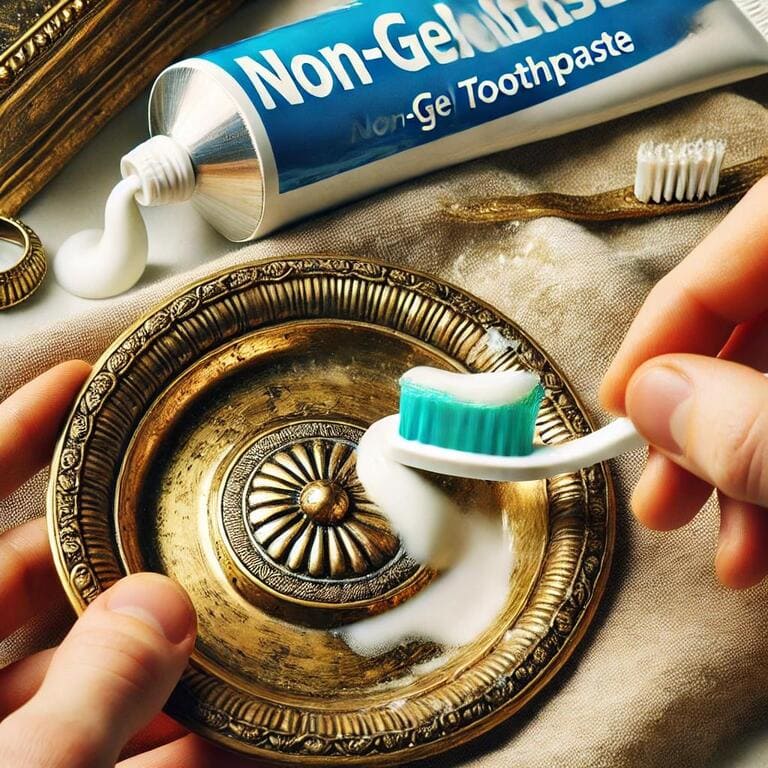
Non-gel toothpaste is another excellent option for cleaning brass.
- Apply a small amount of toothpaste to a soft cloth or toothbrush.
- Gently rub the tarnished areas in circular motions.
- Rinse and polish with a dry cloth.
Commercial Brass Cleaners
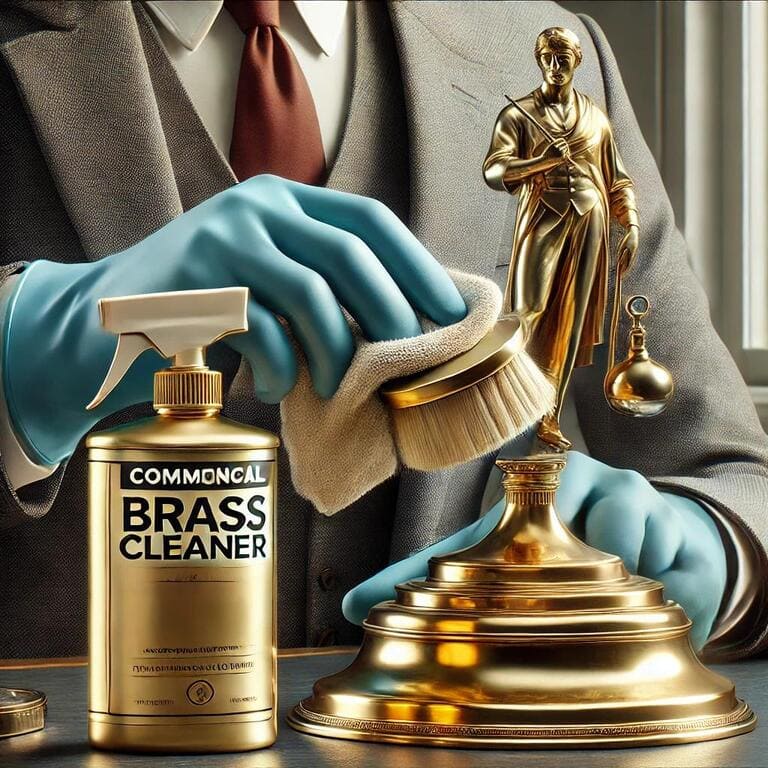
If natural methods aren’t effective, you can use a commercial brass cleaner. Make sure to follow the product instructions carefully, and always wear gloves when using chemical cleaners to protect your hands.If natural methods aren’t effective, you can use a commercial brass cleaner. Make sure to follow the product instructions carefully, and always wear gloves when using chemical cleaners to protect your hands.
How to Restore Brass
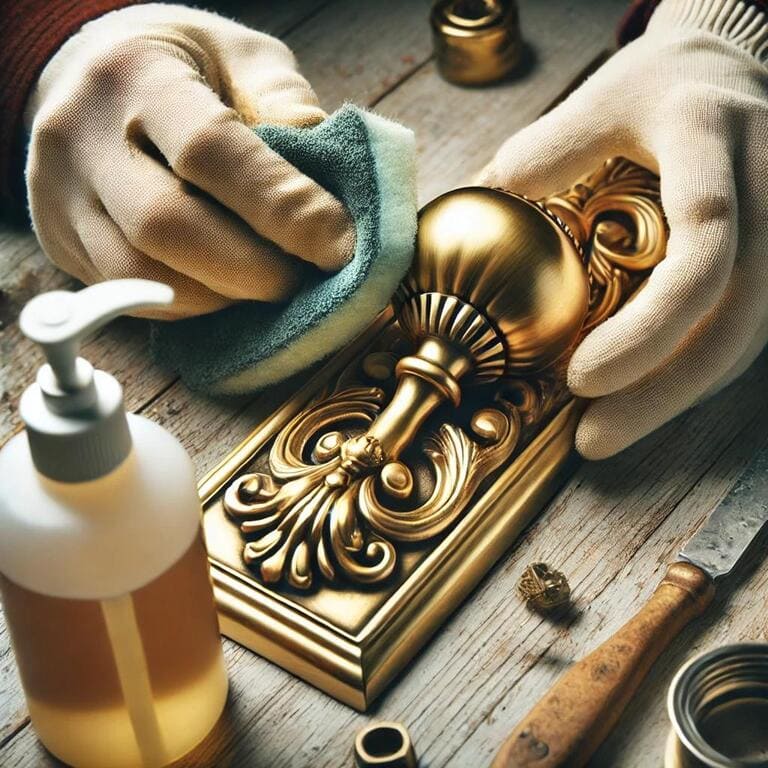
Restoring brass is about more than just cleaning the tarnish – it’s about bringing back its original brilliance. Here’s how you can restore even the dullest brass items.
Buffing and Polishing
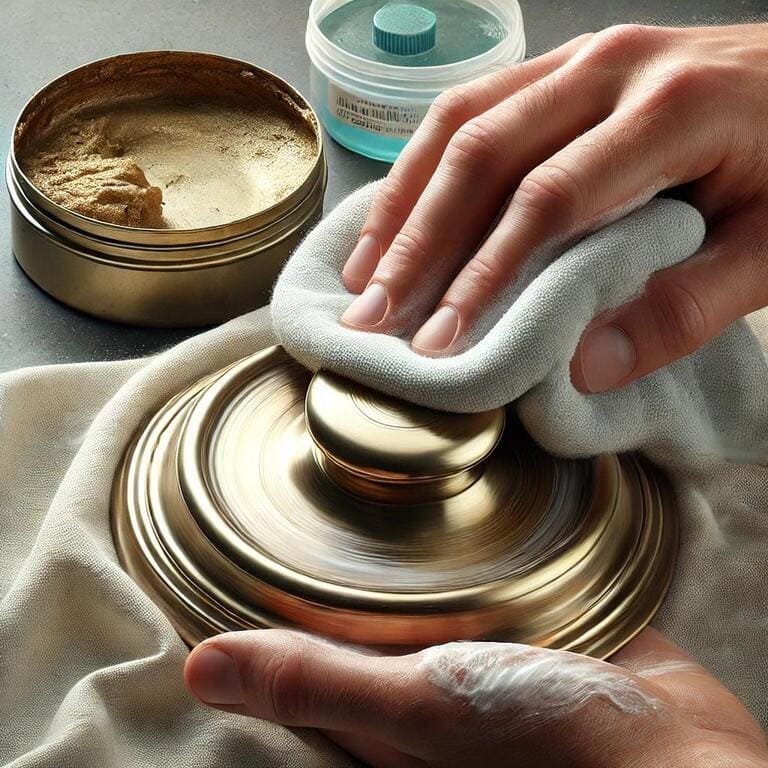
Buffing helps remove any remaining tarnish and restores the shine of brass.
- Use a microfiber or cotton cloth to gently buff the surface of the brass.
- Apply a specialized brass polish or a paste of vinegar and flour.
- Rub in small circular motions to achieve a smooth, polished finish.
- Use a clean cloth to wipe off any residue.
Fixing Deep Tarnish or Scratches
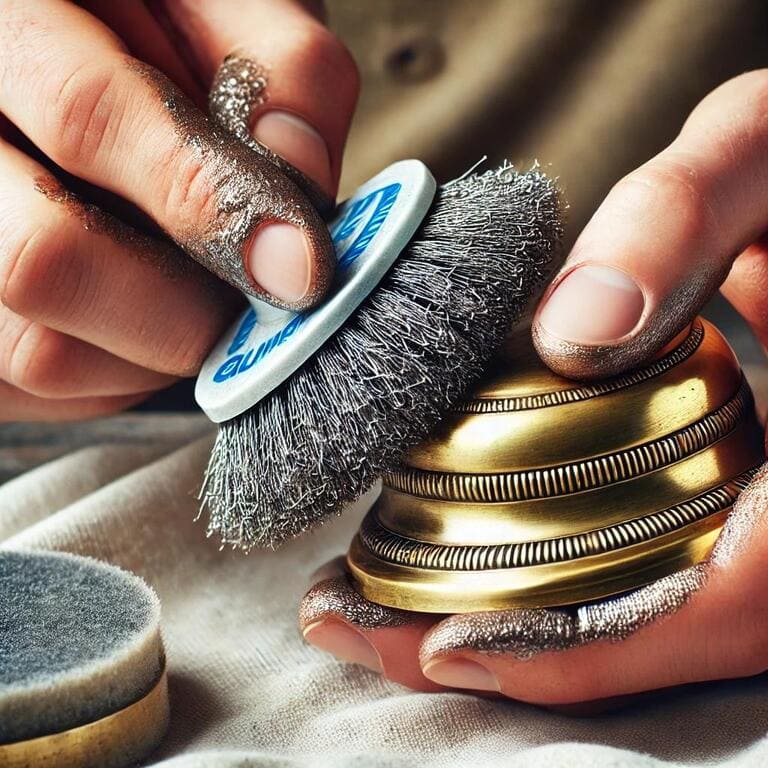
For deeply tarnished or scratched brass, more aggressive measures may be needed:
- Use ultra-fine steel wool (0000 grade) for deeper tarnish or fine scratches.
- Rub lightly to avoid removing too much of the brass surface.
- Follow up with a polishing cloth to restore the shine.
How to Maintain Brass
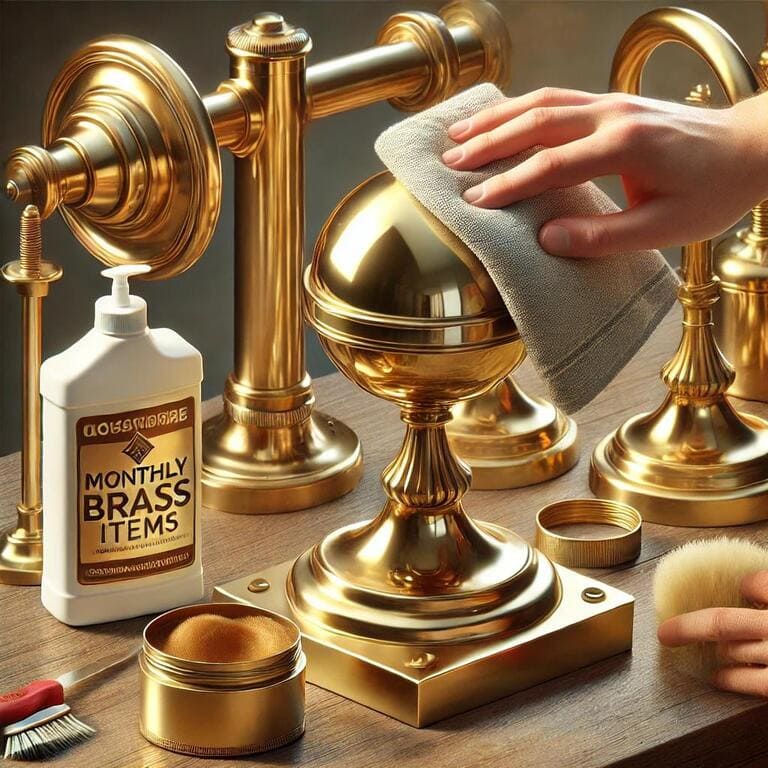
Once you’ve cleaned and restored your brass, proper maintenance is key to preventing future tarnishing. Here are some helpful tips to maintain brass in top condition:
Regular Dusting
Dust your brass items regularly using a soft, dry cloth to remove dust, fingerprints, and other debris. Regular dusting helps prevent the buildup of dirt and grime, which can speed up tarnishing.
Monthly Polishing
Polish your brass items once a month to maintain their shine. Use a brass polish or a homemade paste to remove any early signs of tarnishing. Be sure to buff the brass after polishing to enhance the shine.
Avoid Humidity
Brass tarnishes faster in humid environments. If possible, keep brass items in areas with low humidity levels. For items in humid environments (e.g., outdoor brass fixtures), you can protect them by applying a thin coat of lacquer or wax (more on this below).
How to Protect Brass
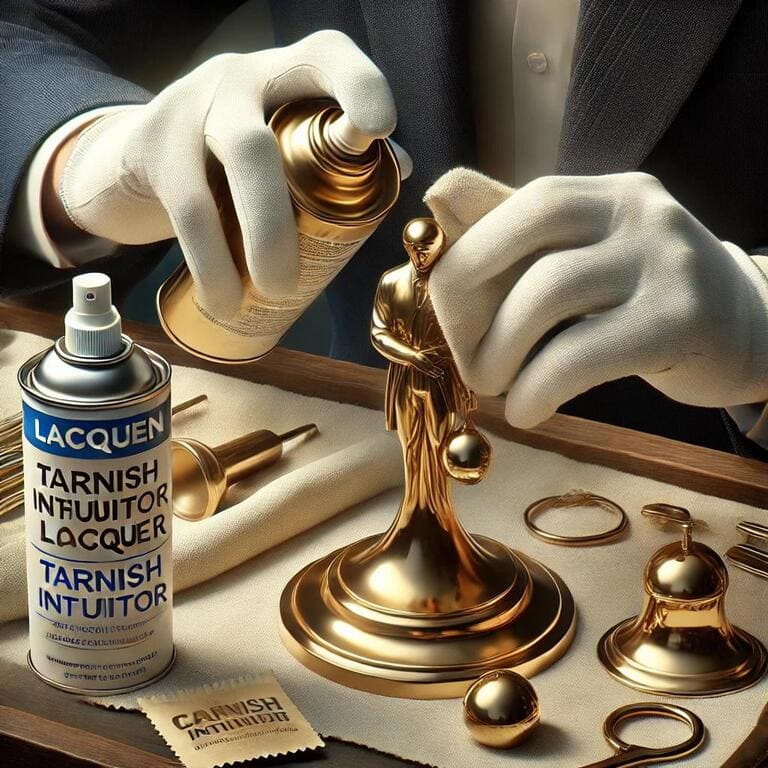
Preventing tarnish before it starts is the best way to keep your brass looking new. There are several methods you can use to protect brass from tarnishing in the future.
Applying a Protective Coating
One of the most effective ways to protect brass is by applying a protective coating like lacquer or wax. This acts as a barrier between the brass and environmental elements that cause tarnishing.
Lacquer Coating
- Clean the brass thoroughly before applying lacquer.
- Use a spray lacquer designed for metals.
- Apply thin, even coats, and allow each coat to dry completely before applying the next.
Wax Coating
- Use a high-quality paste wax designed for metals.
- Apply a thin layer with a soft cloth and buff to a shine.
Storing Brass Items Properly
If you’re storing brass items for long periods, ensure they’re stored in a dry, temperature-controlled environment. Wrapping brass in a soft cloth can help prevent scratches and exposure to air.
Using Brass Tarnish Inhibitors
Tarnish inhibitors are cloths or papers infused with chemicals that absorb moisture and sulfur compounds in the air. Place these in drawers or storage areas with your brass items to slow the tarnishing process.
Conclusion
Brass is a stunning material, but keeping it free from tarnish requires regular care and maintenance. By understanding the causes of tarnishing and using the cleaning, restoring, and protection tips provided, you can preserve the beauty of your brass items for years to come. Whether you prefer natural cleaning methods or commercial products, the key is consistency – regular cleaning and polishing will ensure your brass always shines bright.
With a little effort and the right techniques, your brass fixtures and decor will stay tarnish-free and gleaming, adding warmth and elegance to your space. Now that you know how to keep brass from tarnishing, you can confidently care for your brass, knowing that it will continue to enhance your home or business for years to come.


Pingback: How to Choose the Perfect Brass Switch Plate for Your Home Style | Getswitches.com